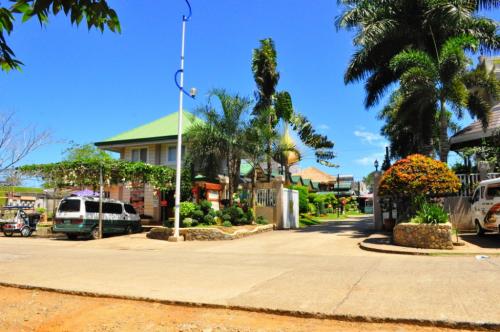
Cabatuan is a municipality which lies at the heart of the island of Panay. It is some 24 kilometers away northwest of Iloilo City. It has a number of historical landmarks, the most famous of which is the Cabatuan Church.
Built in 1834, San Nicholas de Tolentino Parish Church is one the most popular tourist destinations in Iloilo. It is Tuscanic in style with baroque and neoclassic elements. The gigantic Church is the only existing church in Iloilo which has three façades. Its twin belfries capped with cream-colored domes are considered to be one of the best in the Philippines.
The cemetery of Cabatuan, Iloilo, is one of the fewest cemeteries in the Philippines with Historic significance and an extant Hispanic Artistry. This century old Spanish-Filipino Cemetery is the only cemetery in the Philippines which is a perfect square. Three Byzantine arch entrances dominate the front-gate, while a baroque central chapel is located at the center. The chapel is a fusion of Roman, Gothic, Byzantine, and Baroque architectures. The complex carvings on the chapel's facade is considered to be the most distinct cemetery relief which can only be found in Cabatuan. Furthermore, this cemetery's neatness and organization is famous throughout the region.
Another attraction in Cabatuan is the Pamulogan Hill, wherein lies a concrete cross reminiscent of the original cross planted by the Spaniards who first came in the region.
The picturesque Baluarte Shrine, located in Balic Hill, is one of the places in Cabatuan that attract many tourists and pilgrims during lent. On the peak is a cross, a replica of the one in Pamulogan Hill, and on the foot of the hill lies an art-deco chapel. The view at the cross offers an astounding view of the whole town.
The town celebrates three main holidays: the Cabatuan Town Fiesta on September 10, as well as the Tinuom Festival that culminates the town fiesta and the strictly observed Lenten procession during Holy Week. Every year the Municipality of Cabatuan celebrates its Patronal Town Fiesta in honor of San Nicolas de Tolentino. The festivities of the celebration kick-off through an opening salvo of the cultural festival of the town, the Tinuom Festival. “Tinuom” is the town's popularly craved delicacy, made of native chicken souped with spices - tomatoes, onions, garlic, ginger, and lemon grass and wrapped in banana leaves.
A rather interesting heritage site of Cabatuan is the Shrine of the Bondage Tree which lies in the town plaza directly in front of the Municipal Hall. The Tree of Bondage is believed to be as old as the town's Church and Town Hall. It is believed that when the Town Hall and the Church were being built, those who refuse to work, or those who escaped from forced labor were tied on this crooked Calachuchi (Plumeria) tree and whipped. Today, this strange tree exists like its gasping for life though it's blessedly living and for centuries, it has been there, lying on its nook like holding a mysterious tale.
Sources:
Official Website of the Municipality of Cabatuan
Official Online Home of Cabatuan